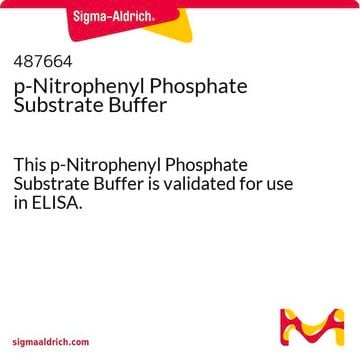P7998
Alkaline Phosphatase Yellow
alkaline phosphatase substrate, chromogenic liquid
Sinónimos:
Alkaline phosphatase substrate solution (pNPP)
About This Item
Productos recomendados
product name
Alkaline Phosphatase Yellow (pNPP) Liquid Substrate System for ELISA, ready to use solution
Quality Level
form
liquid
storage temp.
2-8°C
Categorías relacionadas
General description
Application
Caution
Physical form
Preparation Note
signalword
Danger
hcodes
Hazard Classifications
Eye Dam. 1 - Skin Irrit. 2 - STOT RE 2
Storage Class
10 - Combustible liquids
wgk_germany
WGK 3
flash_point_f
Not applicable
flash_point_c
Not applicable
Certificados de análisis (COA)
Busque Certificados de análisis (COA) introduciendo el número de lote del producto. Los números de lote se encuentran en la etiqueta del producto después de las palabras «Lot» o «Batch»
¿Ya tiene este producto?
Encuentre la documentación para los productos que ha comprado recientemente en la Biblioteca de documentos.
Los clientes también vieron
Artículos
NBT-BCIP substrate system aids in western blotting and immunohistological staining, producing a blue-purple insoluble end product.
Nuestro equipo de científicos tiene experiencia en todas las áreas de investigación: Ciencias de la vida, Ciencia de los materiales, Síntesis química, Cromatografía, Analítica y muchas otras.
Póngase en contacto con el Servicio técnico










